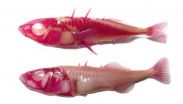Parts of genome without a known function may play a key role in the birth of new proteins
The study analysed experiments carried out on six different species and identified almost 2,500 IncRNAs that were not in the databases
2014-09-17
(Press-News.org) Researchers in Biomedical Informatics at IMIM (Hospital del Mar Medical Research Institute) and at the Universitat Politècnica de Catalunya (UPC) have recently published a study in eLife showing that RNA called non-coding (IncRNA) plays an important role in the evolution of new proteins, some of which could have important cell functions yet to be discovered.
Ribosomes produce proteins from the instructions found in an RNA molecule. However, only 2% of the human genome is RNA containing information for the synthesis of proteins, meaning it is coding. Other parts of the genome that are transcribed could be "evolutionary noise", parts of the DNA that are copied to RNA randomly but with no concrete biological function. Now, a new sequencing technique has revealed that many of these transcripts (IncRNAs) may also translate into proteins, leading to an intense debate.
"We have confirmed that in all six species that were studied –human beings, mice, fish, flies, yeast and a plant– many of the IncRNAs were associated to ribosomes and seemed to be ready to translate RNA into proteins. This suggests that they could act as a repository for the synthesis of new proteins" explains Mar Albà, a professor at ICREA and the coordinator for the research group on Evolutionary Genomics at IMIM.
The study has found almost 2,500 IncRNAs that had not been studied, besides those identified previously, and has shown that very few IncRNAs are in more than one species. This would suggest that they have evolved recently. This hypothesis is backed by the fact that the properties of the IncRNA molecules show many similarities with the properties of "young" genes that are known to produce proteins.
"The birth of a new functional protein is a trial and error process that probably requires the production of many transcripts that will not survive the test of time, and IncRNA seems to fit this role. The study of closely related species will allow us to better understand how new coding genes are formed and identify those that can be functional. It will also be interesting to study the link between the alteration of IncRNA expression patterns and certain diseases" concludes Mar Albà.
INFORMATION:
Article of Reference:
"Long non-coding RNAs as a source of new peptides". Jorge Ruiz-Orera (Fundación IMIM), Xavier Messeguer (Universitat Politècnica de Catalunya), Juan Antonio Subirana (Universitat Politècnica de Catalunya), and M. Mar Alba (Fundacion IMIM and ICREA). Tracking no: 29-05-2014-RA-eLife-03523R1
ELSE PRESS RELEASES FROM THIS DATE:
Iberian pig genome remains unchanged after 5 centuries
2014-09-17
A team of Spanish researchers have obtained the first partial genome sequence of an ancient pig. Extracted from a sixteenth century pig found at the site of the Montsoriu Castle in Girona, the data obtained indicates that this ancient pig is closely related to today's Iberian pig. Researchers also discard the hypothesis that Asian pigs were crossed with modern Iberian pigs.
The study, published in Heredity, sheds new light on evolutionary aspects of pig species, and particularly on that of the Iberian breed, considered to be representative of original European Mediterranean ...
Smoke wafts over the Selway Valley in Idaho
2014-09-17
Smoke from the fires in the Selway Complex is wafting into the Selway River valley in this image taken by the Moderate Resolution Imaging Spectroradiometer (MODIS) aboard the Terra satellite on September 15, 2014. Actively burning areas, detected by MODIS's thermal bands, are outlined in red. All the fires began between August 10 and August 25, 2014 by lightning strikes. The following fires are part of the Selway Complex: Raven Creek, Elevator Mountain, Eagle Creek, Vance Mountain, Nick Wynn, and Jerusalem fires.
The Johnson Bar fire is also contributing to the smoke ...
Slimy fish and the origins of brain development
2014-09-17
Lamprey—slimy, eel-like parasitic fish with tooth-riddled, jawless sucking mouths—are rather disgusting to look at, but thanks to their important position on the vertebrate family tree, they can offer important insights about the evolutionary history of our own brain development, a recent study suggests.
The work appears in a paper in the September 14 advance online issue of the journal Nature.
"Lamprey are one of the most primitive vertebrates alive on Earth today, and by closely studying their genes and developmental characteristics, researchers can learn more about ...
Improved risk identification will aid fertility preservation in young male cancer patients
2014-09-17
(MEMPHIS, TENN. – September 16, 2014) A study led by St. Jude Children's Research Hospital investigators has found the chemotherapy dose threshold below which male childhood cancer survivors are likely to have normal sperm production. The study appears in September 17 edition of the journal Lancet Oncology.
By clarifying which patients are at highest risk for reduced sperm production as adults, researchers expect the findings to eventually increase use of pre-treatment fertility preservation methods such as sperm banking.
The study involved drugs called alkylating agents ...
The rich have more political clout in states, but stricter lobbying rules can narrow gap
2014-09-17
State legislators are more attentive to wealthy citizens' political opinions compared to poor citizens' opinions when making policy decisions, but stricter regulations on professional lobbyists can promote more equal political representation, according to a Baylor University study.
"Stricter lobbying laws are an important tool for ensuring that citizens' opinions receive more equal consideration when elected officials make important policy decisions," said researcher Patrick Flavin, Ph.D., assistant professor of political science in Baylor's College of Arts & Sciences.
The ...
Counting fish teeth reveals regulatory DNA changes behind rapid evolution, adaptation
2014-09-17
Sticklebacks, the roaches of the fish world, are the ideal animal in which to study the genes that control body shape. They've moved from the ocean into tens of thousands of freshwater streams and lakes around the world, each time changing their skeleton to adapt to the new environment.
Breeding studies between marine and freshwater populations of sticklebacks now have turned up one of the genes that controls tooth number, plus evidence that a simple change in that gene's regulation in a freshwater population is associated with a near doubling in the number of teeth. ...
Smart teens rub off on teammates
2014-09-17
A new study of high school activities bears this message for incoming high school students: Play what the smart kids play.
Joining an extra-curricular team or club with members that get good grades can double a high school student's odds of going to college.
And Brigham Young University sociologist and study co-author Lance Erickson knows how to sell the study to teens.
"Tell your parents, whatever they ground you from, it shouldn't be from practice or a club activity," said Erickson. "If they ground you from a school club, you are more likely to end up living at ...
Being social: Learning from the behavior of birds
2014-09-17
VIDEO:
In this Science Minute from NIMBioS, Dr. Elizabeth Hobson explains what monk parakeets can teach us about complex sociality.
Click here for more information.
KNOXVILLE—Science has learned a great deal about complex social behavior by studying nonhuman mammals and primates, but parrots might have something to teach too.
With their unusually large brains relative to their body size and advanced cognition, parrots live in a complex social environment---not merely in ...
Malaysia's 'Smart Villages' and 9 other proven ideas for sustainable development
2014-09-17
As nations zero in on the UN's post-2015 global Sustainable Development Goals, innovations being successfully pioneered and demonstrated in Malaysia offer several proven tactical ideas for improving the world, says an influential international sustainable development networking organization.
The UN's Sustainable Development Solutions Network (SDSN), through its Malaysian chapter, cites ways in which the country is "rising to the challenge," including the construction of ingenious, self-sustaining "smart" villages -- each lifting about 100 families out of poverty and ...
New study examines the impact of socioeconomic position and maternal morbidity in Australia
2014-09-17
The risk of severe maternal morbidity amongst women in Australia is increased by lower socioeconomic position, suggests a new study published today (17 September) in BJOG: An International Journal of Obstetrics and Gynaecology.
Australians generally enjoy high standards of living; however, existing research has concluded that health disparities exist, in particular between indigenous and non indigenous Australians.
This case-control study aimed to explore the independent impact of socioeconomic position on severe maternal morbidities associated with direct maternal ...
LAST 30 PRESS RELEASES:
The perfect plastic? Plant-based, fully saltwater degradable, zero microplastics
Bias in data may be blocking AI’s potential to combat antibiotic resistance
Article-level metrics would provide more recognition to most researchers than journal-level metrics
Satiety’s little helper: Protein that supports appetite regulating protein identified
UF dives deep into predicting storm damage with computer models
A stormy ocean voyage yields insights on the global carbon cycle
Scientists identify first non-coding gene that controls cell size
Demonstration of altermagnetism in RuO₂ thin films -- A new magnetic material for the AI era
Penn researchers awarded $25M to conduct trial using smartphones to fight heart disease
PCORI awards funding for new patient-centered healthcare research
Exploring the origins of the universe: 145 low-noise amplifiers complete ALMA telescopes
Empress cicada wings help illuminate molecular structure
Using sound waves to detect helium
Time burden in patients with metastatic breast and ovarian cancer from clinic and home demands
Researchers discover bias in AI models that analyze pathology samples
Scientists ID potential way to prevent brain injuries from triggering Alzheimer's
MASTER 2nd Open Call: Execution period kick-off
Algae for health in food and pharma
Advanced microrobots driven by acoustic and magnetic fields for biomedical applications
Chicago health information leader recognized for raising CPR readiness and blood pressure awareness
The Intimate Animal, a new book from Kinsey Institute Executive Director Dr. Justin Garcia
When blue-collar workers lose union protection, they try self-employment
New video dataset to advance AI for health care
MEA-based graph deviation network for early autism syndrome signatures in human forebrain organoids
New modeling approach sheds light on rare gut disease
Study documents potentially hazardous flame retardants in firefighter gear
Can certain bacteria regulate aging of the immune system and its related alterations?
AI model helps diagnose often undetected heart disease from simple EKG
There are fewer online trolls than people think
Cell membrane fluctuations produce electricity
[Press-News.org] Parts of genome without a known function may play a key role in the birth of new proteinsThe study analysed experiments carried out on six different species and identified almost 2,500 IncRNAs that were not in the databases




